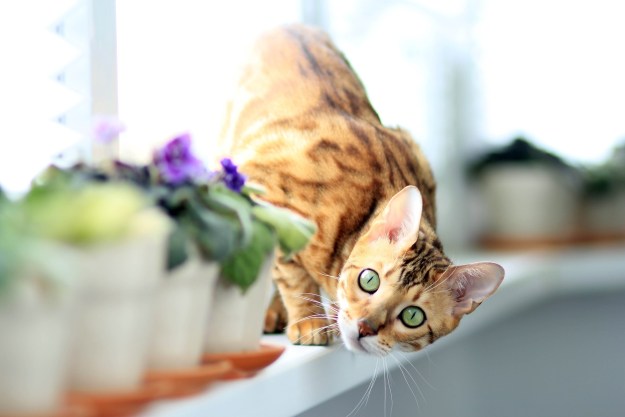
Here are a few things to consider. First, don’t get a plastic bowl, as those are prone to buildup. Also, make sure the bowl you get is comfortable for your cat and doesn’t rub against their whiskers unpleasantly. A bowl that’s too deep or too low could be problematic. With that in mind, here are some of our recommended cat dishes.
Some cats are picky eaters, and they won’t eat from a dish that’s not comfortable. Also, dishes that are poorly designed might spill, which means you might need to clear your floor every time your cat eats. And lastly, the wrong material will be impossible to clean, which means you will have to buy a new dish much sooner than you otherwise should.
UPSKY No-Spill Cat Bowl Station
Best Easy to Clean

This feeder has two 11-ounce bowls, so you can keep both the food and water in one device. The bowls are made from high-quality stainless steel with a unique resin bottom and are dishwasher safe for easy cleaning.
Van Ness ECOWARE Cat Dish
Best Budget

These bowls are eco-friendly and are made from renewable plant sources, most notably 47% bamboo plant. They’re also very shallow and wide to prevent any whisker stress. They are very durable and won’t break under any normal use.
Lesotc Cat-Shaped Dish Set
Best Unique Cat Dish

If you’re looking for a well-designed, good-looking cat dish, this is the one for you. It looks totally adorable and is sure to get many compliments from guests. It’s also made from BPA-free melamine, which is a nontoxic, strong, odorless material.
Another good tip is to make sure you don’t place the food dishes next to your cat’s litter box. After all, you wouldn’t want to eat lunch in your bathroom either. And don’t forget to practice food bowl hygiene, cleaning and sanitizing often. If you feed your cat wet foods, make sure to wash the bowl after every meal.


